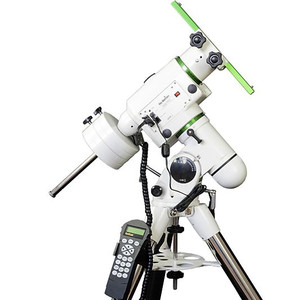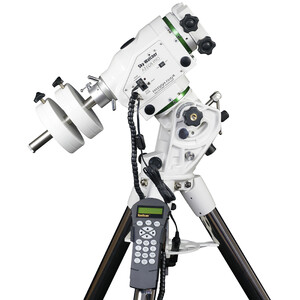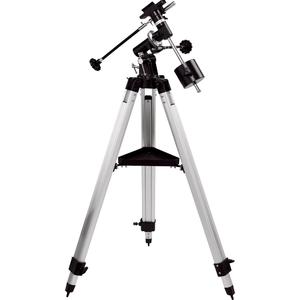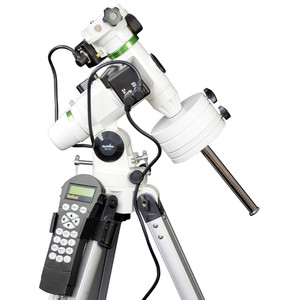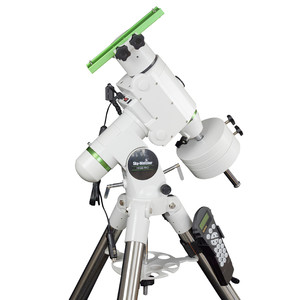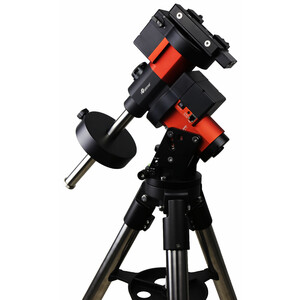Overview of EQ mounts
EQ series mounts are omnipresent - many manufacturers offer them with their telescopes. Here's an overview.
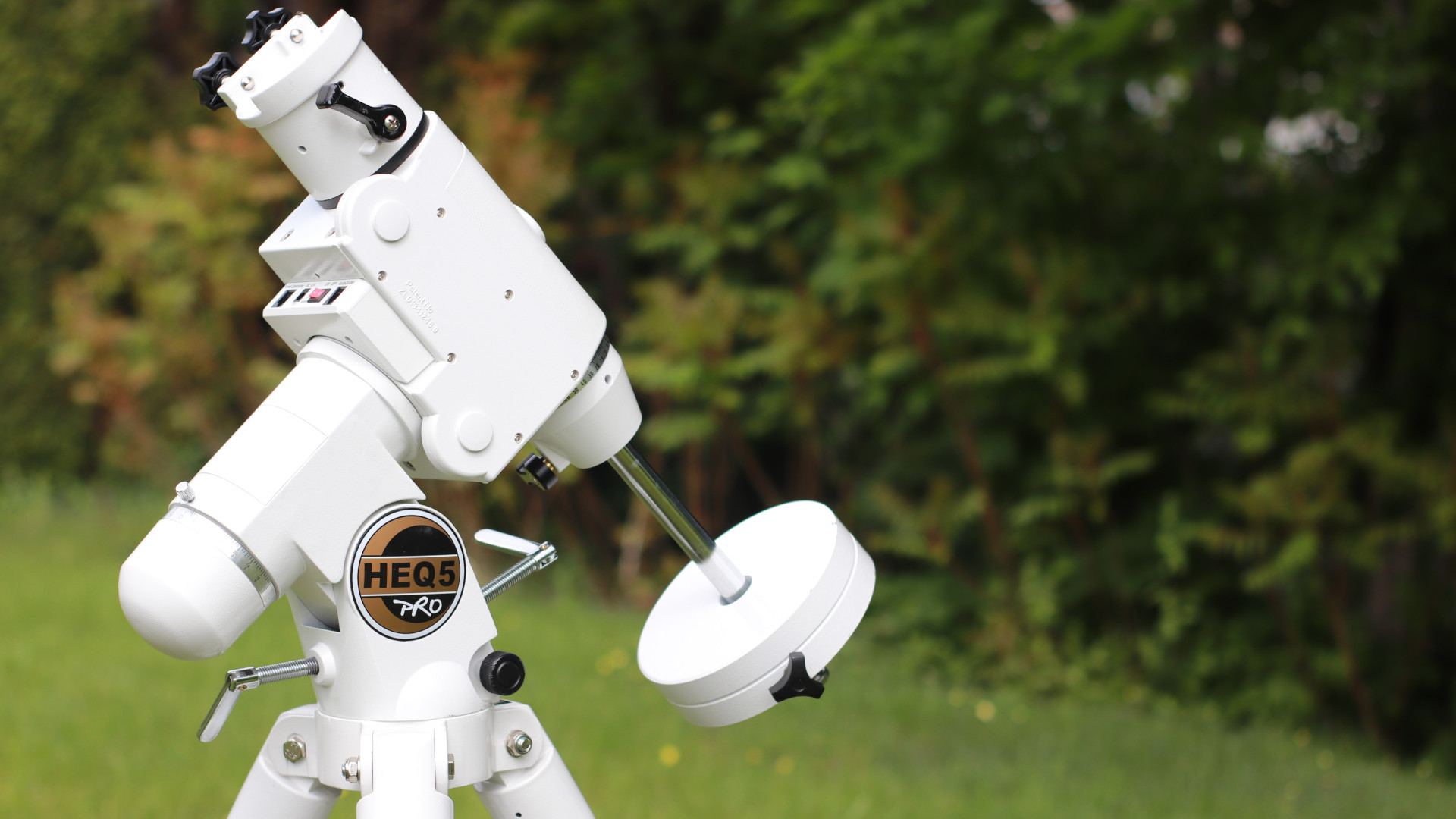
All the major telescope manufacturers often offer EQ series mounts. These are classified as EQ-1, EQ-2, and EQ-3 depending on size and stability. Synta, which manufactures under the Skywatcher brand, has also developed the flagship models EQ-5, HEQ-5 and EQ-6. They are very popular and widely used mounts, which all feature the equatorial construction.
EQ-1
The EQ-1 is the lightest mount and is only intended for small telescopes. If you were to attach a medium-sized telescope to this mount, it would not be sufficiently stable. The result would be that your telescope would be moderately or highly susceptible to shaking.
With a large telescope on such a small mount, the vibration and shaking would be so great that observing would no longer be any pleasure. Therefore, choosing a suitable mount is just as important as choosing a good telescope.
The EQ-1 mount is usually offered with a 114/500 Newtonian telescope (i.e. 114 mm aperture and 500 mm focal length) or as a smaller 80/400 refractor on a table-top mount.
EQ-2
The EQ-2 mount is somewhat more stable, so larger telescopes are an option. The stability is sufficient for visual observation. However, neither the EQ-1 nor the EQ-2 are particularly suitable for astrophotography.
114/900, 130/650 and 130/900 Newtonian telescopes are offered with the EQ-2. 70/900 and 90/900 refractors are also available.
EQ-3
The EQ-3 mount is more stable than the previous two. It is available together with 150/750 and 150/1200 Newtonian telescopes, or 102/1000 or 120/600 refractors. If you compare the EQ-3 with the EQ-2, you will see that the EQ-3 is significantly more solidly built. This is important, because these telescopes are much heavier than the very small ones. The 120/600 refractor is just about the upper limit in terms of payload. Its focal length and thus its overall length is rather short. Therefore, any vibration will not have the same effect as when a longer refractor is attached to the mount. This is because a very long telescope also has a greater lever effect, which would place even higher demands on the mount.
With the EQ-3, you have the possibility to integrate a polar finder. With this, you can align precisely to the celestial North Pole. If you retrofit a motor, you can even start astrophotography. However, if you have very demanding astrophotography requirements, or have already reached an advanced level, you will probably opt for the large HEQ-5 mount.
EQ-5
The EQ-5 mount is a large and stable version of the more simple models. As long as this mount is used with a telescope that is not too heavy, then you will have a very solid set-up. The EQ-5 is offered with a 200/1000 Newtonian or with a 120/1000 refractor. The EQ-5 is a replica of the classic GP mount from Vixen. A polar finder can also be retrofitted with this mount. A motor retrofit would also be useful, as then you can then devote yourself completely to the celestial objects you're observing, and not concern yourself with tedious axes adjustments.
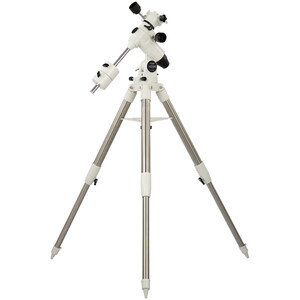

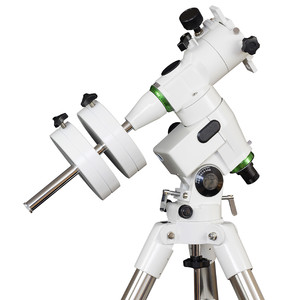
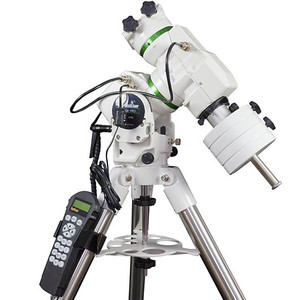
HEQ-5
An even more stable version than the EQ-5 is the top-quality HEQ-5 mount. It is constructed completely with astrophotography in mind, and includes two tracking motors in its elegant design. If you want to take photographs of the night sky, this mount is the best tool for the job. However, since astrophotography places relatively high demands on stability, the mount should not be overloaded. It’s best for Newtonian telescopes up to 200 mm in diameter or for refractors up to 150 mm in diameter. A 200-mm Schmidt-Cassegrain could also be used.
EQ-6
The heaviest mount in this series is the EQ-6. Like the HEQ-5, it has two motors and a controller. An illuminated polar finder is also included. This mount is significantly heavier than the HEQ-5 and can carry Newtonian telescopes up to 250 mm aperture. However, it cannot carry more than 18 kg. With regard to price, the EQ-6 outperforms other heavy mounts, which are comparable in terms of load-bearing capacity. It is excellent not just for visual observation, but also for photography. However, when it comes to long exposure times together with long focal lengths, the mount can be further tuned to increase its running precision. Please contact us with such requests, and we can discuss everything with you in detail.
